Women love trendy health foods because it’s fun to have new things to eat and cook if they taste good and aren’t “bad” for you. But do the top trendy health foods live up to their health claims? Let’s take them one by one so you can decide for yourself.
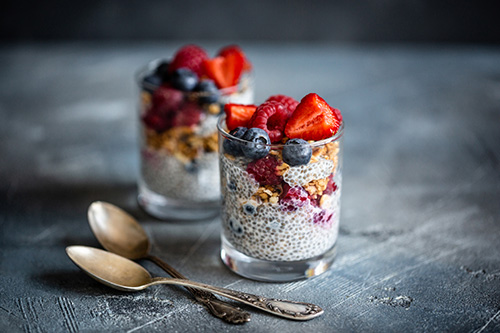
1. Chia seeds
What they say: promote weight loss, kill cravings, balance blood sugar, lower cholesterol
What we know: Harvested from Salvia hispanica, chia seeds are unprocessed gluten-free whole grains that contain omega-3 fatty acids and minerals and are high in protein and fiber. The protein and fiber help you feel full for longer though weight loss promotion is a stretch. One small study showed that a mixture with chia and a bunch of other ingredients had some effects on triglycerides and insulin.
What to expect: Add chia seeds (white or black) to your diet for their fiber and antioxidant potential, not for weight loss or cholesterol-lowering. Note that one tablespoon of chia seeds has 60 calories. Mixed with water, chia seeds turn into a gel and can be used to thicken foods.
How to eat them: Sprinkle or grind up and add to yogurt, smoothies, pancakes and cookies.
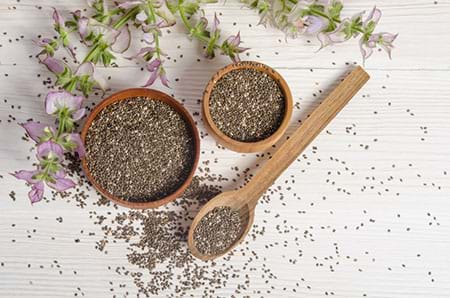
2. Kefir
What they say: lowers cholesterol, treats high blood pressure, helps cure cancer
What we know: This sour yogurt-like fermented milk drink has steadily gained space on supermarket shelves but kefir’s benefits aren’t well proven in humans yet. One older human study says drinking it daily for 4 weeks reduces cholesterol but only slightly. With mixed study results about its effects on blood pressure, kefir’s bacterial starter cultures seem to show some anti-cancer cell activity — but only in the lab. One little study a few years back showed extra activity in cancer-fighting immune “killer” cells.” The strongest research shows kefir’s best effects are on digestion.
What to expect: If you like its distinctive tangy taste, drink plain, unsweetened kefir for its decent amounts of protein, calcium and potassium. Kefir can also help with lactose digestion by reducing gas and bloating by a whopping 70%. Skip the commercial flavored varieties of kefir which have added sugar.
How to eat it: Straight from the package, in smoothies, with natural flavors, like vanilla, added at home.

3. Almond milk
What they say: dairy-free, high nutrient content, low in calories, no cholesterol, replacement for breast milk
What we know: Considered America’s favorite milk substitute, almond milk is tasty but is just 2% almonds and a lot of water. To get the same protein of a handful of almonds, you’d have to drink an entire carton of almond milk. Almond milk naturally contains vitamin E but calcium, potassium and other vitamins are added. Some almond milk-fed infants have developed nutrient deficiencies.
What to expect: Unsweetened, unflavored almond milk is low in calories but a serving of “original” almond milk has a fraction of the protein of a handful of almonds along with a fair amount of salt. You’ll also swallow between 7-16 grams of hidden sugar per serving! Almond milk is low in calories compared to almonds or regular milk but without the key nutrients.
How to eat it: Unsweetened or “lite” versions, unflavored, can be used in place of milk as an ingredient in other foods with an additional protein source. Watch out for additives like carrageenan.
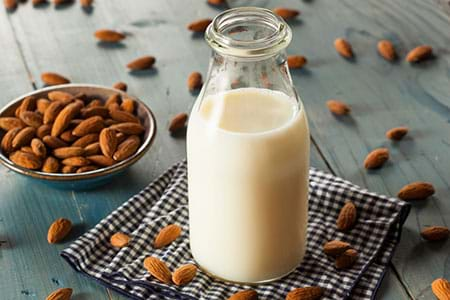
4. Turmeric
What they say: reduces inflammation, helps with arthritis, fights cancers, treats digestive issues
What we know: Turmeric (Curcuma longa), used medicinally for thousands of years, is a central spice in curries and other Indian foods and has been studied extensively, along with its coloring agent, curcumin. As a well-established antioxidant, turmeric also appears to reduce levels of two inflammatory enzymes and may help stop blood platelets from clumping. It has positive preliminary research on its anti-cancer properties and heart health support, and helps with digestive symptoms, and even ulcerative colitis.
What to expect: Turmeric and curcumin are safe to consume and appear to have antioxidant properties that can help prevent and treat chronic inflammation diseases according to recent research. In small amounts, it relieves digestive symptoms.
How to eat it: Add turmeric or curcumin to curries, stews and soups, and even sweet foods and drinks. If you want to supplement your food intake, the best products have improved absorbability without causing stomach upset.
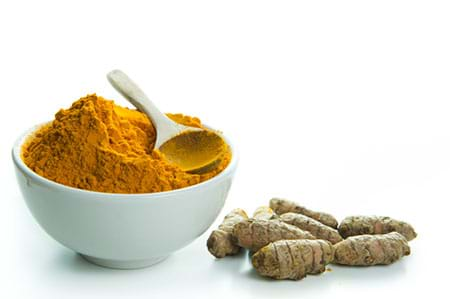
5. Kombucha
What they say: cures digestive problems, relieves joint pain, improves longevity, detoxifies
What we know: Kombucha is an ancient green or black tea (Camellia sinensis) that has been fermented with sugar, yeast fungi and bacteria until it becomes fizzy and cloudy. It contains probiotics (and some prebiotics) and more antioxidants that regular teas, but that’s about all we know. Traditionally made at home, kombucha can be overfermented or handled improperly and may turn toxic and upset your stomach, though worse effects have been reported.
What to expect: If you like its vinegary taste and clumpy consistency, you may get some digestive assistance from kombucha’s bacteria but no other benefits have been confirmed. Not everyone can stomach it.
How to eat it: Choose commercially produced kombucha for safety’s sake but don’t drink more than 14 ounces at a time, and look for low sugar varieties.

6. Matcha
What they say: fights cancer, assists weight loss, has anti-aging benefits, reduces heart disease risk
What we know: Matcha is powdered whole green tea leaves and is packed with antioxidants. Because it contains caffeine and theanine, matcha might help you concentrate and stay alert. Many of the concentrated phytonutrients in matcha have been shown to have health benefits, including boosting metabolism.
What to expect: Matcha has a distinctive grassy tea flavor and is extremely potent. Its polyphenol content is well-established but because the whole leaf is consumed, lead content can be 30 times higher than regular green tea. Traditionally used in Japanese tea ceremonies, matcha is fine in small amounts (1 cup a day) and is appealing for its beautiful green color.
How to eat it: As tea (1 teaspoon matcha with 1/3 cup hot, not boiling, water) or blend small amounts into lattes or smoothies. Limit daily intake to one serving, perhaps with a pinch of sugar. Experts say matcha should be prepared and consumed almost meditatively, which may have additional relaxation benefits.
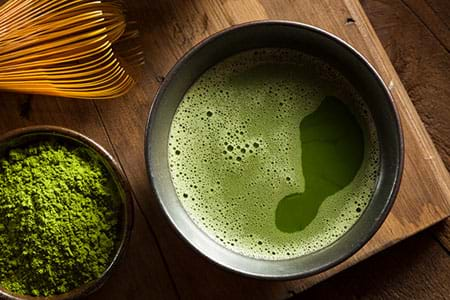
7. Sea vegetables
What they say: treat yeast infections, assist weight loss, relieve arthritis, prevent cancer, regulate estrogen, detoxify
What we know: Edible sea vegetables and seaweeds are from the algae family. They include dulse (Palmaria palmata), kelp (Laminaria), wakame (Undaria pinnatifida) and the favorite: nori (Porphyra tenera) which is used to wrap sushi. Sea vegetables are packed with vitamins (C, B2, A) fiber, manganese and protein, and have so much iodine that it’s easy to get too much. They also contain sulfated polysaccharides or fucoidans, phytonutrients with anti-inflammatory, anti-viral and cardiovascular benefits. Anti-cancer effects look promising, especially for post-menopausal breast cancer, but need more investigation.
What to expect: Dried sea vegetables and products retain their nutrition content with only about 50 calories for two servings. Sea vegetable fiber may help with digestion and reduce fat absorption. Sea vegetables also have lots of calcium and a good supply of omega-3s, especially for vegetarians.
How to eat them: Wrap sushi and sandwich foods, and eat alone as snacks to satisfy a salty craving. Soak them and add to salads, soup and vegetable dishes. Limit intake to one ounce per day so you don’t get too much iodine.

At Women’s Health Network, we love trying trendy health foods — as long as they live up to their claims. We like being able to experiment with unusual ingredients and bring new dishes to the dinner table. Some health food trends will thrill your taste buds more than others so give them all a try!
https://www.eatingwell.com/nutrition_health/nutrition_news_information/10_super_healthy_food_trends_you_haven_t_tried_yet?page=2
https://www.nutrition.org/asn-blog/2012/03/the-real-scoop-on-chia-seeds/
https://www.nutritionletter.tufts.edu/issues/9_3/current-articles/Should-You-Jump-on-the-Chia-Seeds-Bandwagon_967-1.html
https://articles.latimes.com/2008/sep/15/health/he-nutrition15
https://www.goodhousekeeping.com/health/diet-nutrition/a35989/healthy-eating-trends-2016/
https://www.huffingtonpost.ca/2013/09/12/kefir-benefits_n_3914818.html
10 Best Health Benefits of Almond Milk
https://time.com/3677300/almond-milk-nutrition/
https://www.theatlantic.com/business/archive/2016/07/dairy-versus-almond-milk/491030/
https://www.businessinsider.com/why-almond-milk-is-basically-a-scam-2015-4
https://abcnews.go.com/Health/diet-sabotage-closer-almond-milk/story?id=40717056
https://nutritiondata.self.com/facts/custom/278488/2
https://www.menshealth.com/nutrition/do-new-milks-deliver
https://www.prevention.com/food/5-trendy-health-foods-that-arent-all-theyre-cracked-up-to-be/slide/5
https://umm.edu/health/medical/altmed/herb/turmeric
https://www.bonappetit.com/trends/article/food-trends-2016
https://umm.edu/health/medical/altmed/herb/turmeric
Aggarwal BB. Curcumin-free tumeric exhibits anti-inflammatory and anticancer activities: Identification of novel components of tumeric. Mol Nutr Food Res. 2013; 57:1529-42. https://www.ncbi.nlm.nih.gov/pubmed/23847105 Accessed 9.29.16.
Hanai H, Iida T, Takeuchi K, Watanabe F, Maruyama Y, Andoh A, et al. Curcumin maintenance therapy for ulcerative colitis: randomized, multicenter, double-blind, placebo-controlled trial. Clin Gastroenterol Hepatol. 2006;4:1502-6. https://www.ncbi.nlm.nih.gov/pubmed/17101300 Accessed 9.29.16.
He Y, Yue Y, Zheng X, Zhang K, Chen S, Du Z. Curcumin, Inflammation, and Chronic Diseases: How Are They Linked? Molecules 2015, 20, 9183-9213.
https://lpi.oregonstate.edu/mic/dietary-factors/phytochemicals/curcumin
https://www.thekitchn.com/7-ways-to-eat-drink-turmeric-198696
https://www.meriva.info/en/meriva-bioavailable-curcumin/scientific-support/
https://examine.com/supplements/kombucha/
https://mic.com/articles/108502/if-you-re-kind-of-repelled-by-kombucha-you-might-have-the-right-idea#.514QBVAGD
SungHee Kole A, Jones HD, Christensen R, Gladstein J. J Intensive Care Med. 2009 May-Jun;24(3):205-7.
A case of Kombucha tea toxicity. https://www.ncbi.nlm.nih.gov/pubmed/19460826 Accessed 9.29.16.
https://health.usnews.com/health-news/blogs/eat-run/articles/2016-06-02/ready-to-try-matcha
https://news.health.com/2015/03/27/what-is-matcha/
https://ww2.kqed.org/bayareabites/2015/05/22/savoring-seaweeds-what-you-need-to-know-before-diving-in/
Cumashi A, Ushakova NA, Preobrazhenskaya ME et al. A comparative study of the anti-inflammatory, anticoagulant, antiangiogenic, and antiadhesive activities of nine different fucoidans from brown seaweeds. Glycobiology vol. 17 no. 5 pp. 541-552, 2007. https://glycob.oxfordjournals.org/content/17/5/541 Accessed 9.30.16.
Teas J, Vena, D, Cone L, Irhimeh M. The consumption of seaweed as a protective factor in the etiology of breast cancer: proof of principle. J Appl Phycol. 2013 Jun; 25(3): 771–779. https://www.ncbi.nlm.nih.gov/pmc/articles/PMC3651528/ Accessed 9.30.16.
https://www.elle.com/beauty/health-fitness/news/a26568/seaweed-snacks-healthy/
https://www.livestrong.com/article/18578-health-benefits-eating-seaweed/
https://www.webmd.com/diet/ss/slideshow-omega-3-shopping







